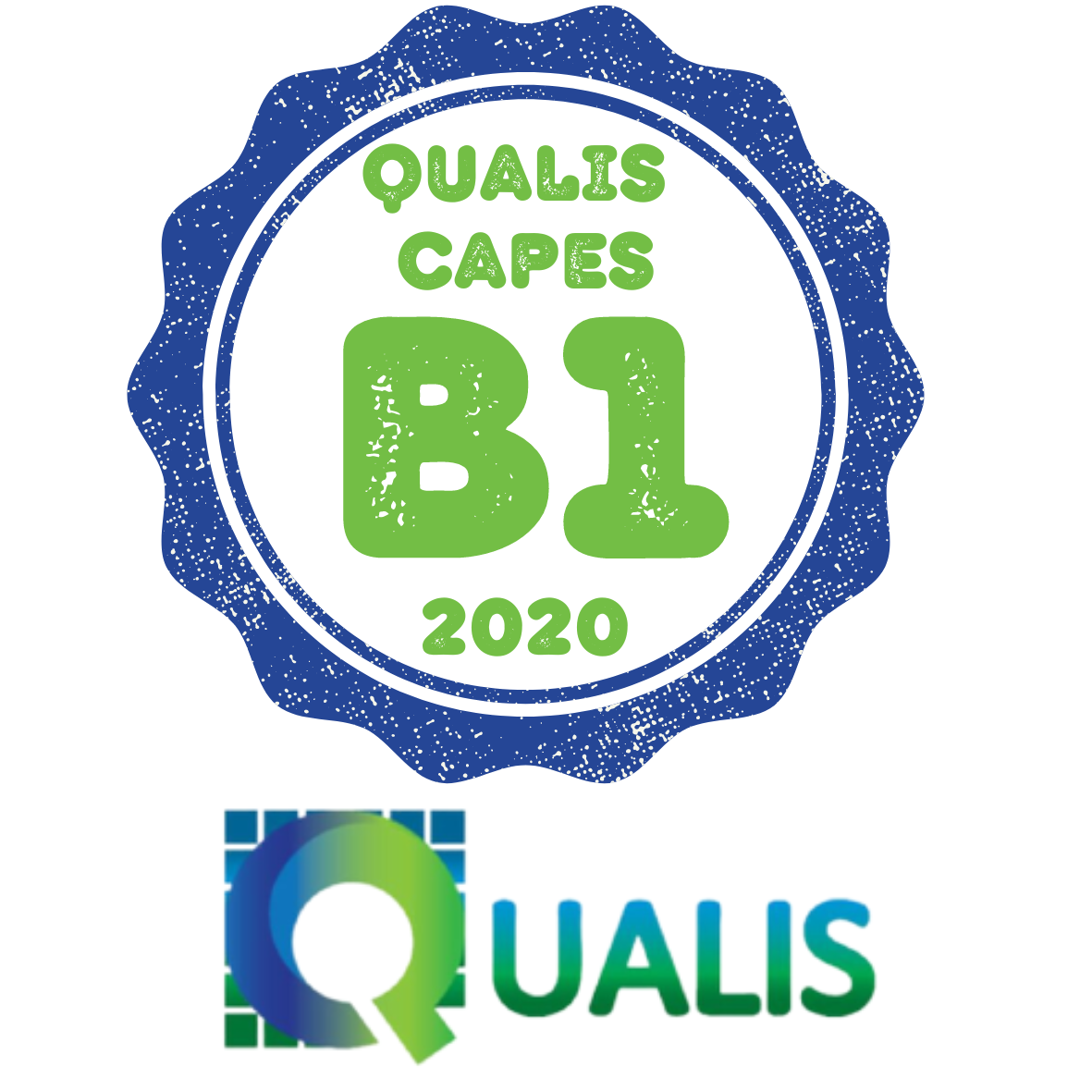UMA INVESTIGAÇÃO SOBRE A RELAÇÃO ENTRE SATISFAÇÃO COM A VIDA E TRAÇOS DE PERSONALIDADE: O CASO DA IRLANDA
DOI:
https://doi.org/10.22289/2446-922X.V9N2A2Palavras-chave:
HEXACO, Personalidade, Escala de Satisfação com a Vida (ESV), COVID-19, Irlanda, traços de personalidadeResumo
Este estudo investigou a relação entre os seis fatores de personalidade HEXACO e a Escala Satisfação com a Vida (ESV) durante a pandemia da COVID-19. Os seis fatores de personalidade HEXACO, ou dimensões, incluem Honestidade-Humildade (H), Emocionalidade (E), Extroversão (X), Amabilidade (A), Conscienciosidade (C) e Abertura à Experiência (O). Nesta pesquisa, o grau de Satisfação com a Vida (ESV) foi a variável dependente. A população amostral deste estudo é representada por (N=343) participantes, nos quais a maioria dos sujeitos, 28,9%, possui entre 30 e 39 anos de idade, 32,7% são do sexo masculino, 67,1% do sexo feminino e 3% outros. Os resultados confirmaram correlações positivas entre a Satisfação com a Vida (ESV) e a Extroversão (X) (p<.001) e a Conscienciosidade (C) (p<.01); houve uma correlação negativa entre a Satisfação com a Vida (ESV) e a Emocionalidade (E) (p < .05). Além disso, houve uma relação negativa entre a Satisfação com a Vida (ESV) e o impacto da COVID (p < .001), o que apoiou nossa hipótese de que haveria uma relação positiva entre ESV, Extroversão (X) e Conscienciosidade (C), haveria uma relação negativa entre a Satisfação com a Vida (ESV) e a Emocionalidade (E), e haveria uma relação negativa entre o impacto da COVID e a Satisfação com a Vida (ESV). No entanto, não houve relações estatisticamente significativas entre a Satisfação com a Vida (ESV) e a Honestidade-Humildade (H), a Abertura à Experiência (O) ou a Amabilidade (A). Em geral, os resultados apoiam os fatores de personalidade HEXACO para prever a Satisfação com a Vida (ESV), embora houvesse algumas limitações no contexto irlandês. Recomenda-se mais pesquisas utilizando os 200 itens HEXACO e uma amostra maior.
Downloads
Referências
Aghababaei, N. (2014). God, the good life, and HEXACO: the relations among religion, subjective well-being and personality. Mental Health, Religion & Culture, 17(3), 284–290. https://doi.org/10.1080/13674676.2013.797956
Aghababaei, N., & Arji, A. (2014). Well-being and the HEXACO model of personality. Personality and Individual Differences, 56, 139–142. https://doi.org/10.1016/j.paid.2013.08.037
Ammar, A., Chtourou, H., Boukhris, O., Trabelsi, K., Masmoudi, L., Brach, M., Bouaziz, B., Bentlage, E., How, D., Ahmed, M., Mueller, P., Mueller, N., Hsouna, H., Aloui, A., Hammouda, O., Paineiras-Domingos, L., Braakman-Jansen, A., Wrede, C., Bastoni, S., … Hoekelmann, A. (2020). COVID-19 Home Confinement Negatively Impacts Social Participation and Life Satisfaction: A Worldwide Multicenter Study. International Journal of Environmental Research and Public Health, 17(17), 6237. https://doi.org/10.3390/ijerph17176237
Anglim, J., & O’connor, P. (2019). Measurement and research using the Big Five, HEXACO, and narrow traits: A primer for researchers and practitioners. Australian Journal of Psychology, 71(1), 16–25. https://doi.org/10.1111/ajpy.12202
Ashton, M. C., & Lee, K. (2009). The HEXACO–60: A Short Measure of the Major Dimensions of Personality. Journal of Personality Assessment, 91(4), 340–345. https://doi.org/10.1080/00223890902935878
Ashton, M., & Lee, K. (2009). The HEXACO-60: A Short Measure of the Major Dimensions of Personality. Journal of Personality Assessment, 91(4), 340–345. https://doi.org/10.1080/00223890902935878
Ashton, M. C., & Lee, K. (2020). Objections to the HEXACO Model of Personality Structure—And Why ThoseObjections Fail. European Journal of Personality, 34, 492–510. https://doi.org/10.1002/per.2242
Branova?ki, B., Sadikovi?, S., Smederevac, S., Mitrovi?, D., & Paji?, D. (2021). A person-centered approach in studying coronavirus pandemic response: The role of HEXACO-PI-R and PANAS dimensions. Personality and Individual Differences, 171, 110536. https://doi.org/10.1016/j.paid.2020.110536
Cattell, R. B. (1957). Personality and motivation structure and measurement. World Book Co.
Cooper, C. (2002). Individual Differences (H. Education, Org.; 2nd ed).
Cooper, C. (2020). Individual Differences and Personality (4th ed). Routledge. https://doi.org/10.4324/9780429059575
Correa, T., Hinsley, A. W., & de Zúñiga, H. G. (2010). Who interacts on the Web?: The intersection of users’ personality and social media use. Computers in Human Behavior, 26(2), 247–253. https://doi.org/10.1016/j.chb.2009.09.003
Costa Jr., P. T., & McCrae, R. R. (2008). The SAGE Handbook of Personality Theory and Assessment: Volume 2 — Personality Measurement and Testing. SAGE Publications Ltd. https://doi.org/10.4135/9781849200479
DCU Survey, L. (2020). Survey Sample. https://dcuconnected.eu.qualtrics.com/Q/EditSection/Blocks/Ajax/GetSu
Diener, E., Emmons, R. A., Larsen, R. J., & Griffin, S. (1985). The Satisfaction With Life Scale. Journal of Personality Assessment, 49(1), 71–75. https://doi.org/10.1207/s15327752jpa4901_13
Diener, E., Lucas, R. E., & Oishi, S. (2002). Sujective well-being: The science of happiness and life satisfaction. Em Handbook of positive psychology. (p. 463–473). Oxford University Press.
Donnellan, M. B., Oswald, F. L., Baird, B. M., & Lucas, R. E. (2006). The Mini-IPIP Scales: Tiny-yet-effective measures of the Big Five Factors of Personality. Psychological Assessment, 18(2), 192–203. https://doi.org/10.1037/1040-3590.18.2.192
Eftekhar, A., Chris, F., & Neil, M. (2014). Capturing personality from Facebook photos and photo-related activities: How much exposure do you need? Computers in Human Behaviour, 37, 162–170.
Eftekhar, A., Fullwood, C., & Morris, N. (2014). Capturing personality from Facebook photos and photo-related activities: How much exposure do you need? Computers in Human Behavior, 37, 162–170. https://doi.org/10.1016/j.chb.2014.04.048
Eysenck, H. J. (2013). The Structure of Human Personality (Psychology Revivals) (E-Book 1st). Routledge. https://doi.org/10.4324/9780203753439
Field, A. (2018). Discovering Statistics Using IBM SPSS Statistics (5th Editio). SAGE.
Friedman, H. S., & Schustack, M. W. (2014). Personality?: classic theories and modern research. Pearson Education Limited.
Funder, D. C. (2016). The personality puzzle (7o ed.). W. W. Norton & Company Ltd.
Goldberg, L. R. (1993). The structure of phenotypic personality traits. American Psychologist, 48(1), 26–34. https://doi.org/10.1037/0003-066X.48.1.26
Goldberg, L. R., Johnson, J. A., Eber, H. W., Hogan, R., Ashton, M. C., Cloninger, C. R., & Gough, H. G. (2006). The international personality item pool and the future of public-domain personality measures. Journal of Research in Personality, 40(1), 84–96. https://doi.org/10.1016/j.jrp.2005.08.007
Gosling, S. D., Rentfrow, P. J., & Swann Jr, W. B. (2003). A very brief measure of the Big-Five personality domains. Journal of Research in Personality, 37, 504–528.
Grant, A. (2015). MBTI, If You Want Me Back, You Need to Change Too. Em MBTI, If You Want Me Back, You Need to Change Too. https://medium.com/.
HEXACO. (2022). HEXACO. https://hexaco.org/scaledescriptions
John, O. P., & Srivastava, S. (1999). The Big Five Trait taxonomy: History, measurement, and theoretical perspectives.
Maltby, J., Day, L., & Macaskill, A. (2017). Personality, Individual Differences and Intelligence (4th ed). Pearson Education Limited.
Martin, G. N., Carlson, N. R., & Buskist, W. (2010). Psychology. Allyn and Bacon.
McCrae, R. R., & Costa, P. T. (1989). Reinterpreting the Myers-Briggs Type Indicator From the Perspective of the Five-Factor Model of Personality. Journal of Personality, 57(1), 17–40. https://doi.org/10.1111/j.1467-6494.1989.tb00759.x
Modersitzki, N., Phan, L., Kuper, N., & Rauthmann, J. F. (2020). Who is impacted? Personality predicts individual differences in psychological consequences of the COVID-19 pandemic in Germany. https://doi.org/https://doi.org/10.31234/osf.io/s65ux
Pallant, J. (2020). SPSS survival manual. Open University Press.
Rammstedt, B., & John, O. P. (2007). Measuring personality in one minute or less: A 10-item short version of the Big Five Inventory in English and German. Journal of Research in Personality, 41(1), 203–212. https://doi.org/10.1016/j.jrp.2006.02.001
Satici, B., Gocet-Tekin, E., Deniz, M. E., & Satici, S. A. (2021). Adaptation of the Fear of COVID-19 Scale: Its Association with Psychological Distress and Life Satisfaction in Turkey. International Journal of Mental Health and Addiction, 19(6), 1980–1988. https://doi.org/10.1007/s11469-020-00294-0
Solomon, M. R. (2020). Consumer Behavour: Buying, Having and Being. Pearson Education Limited.
Tabachnick, B. G., & Fidell, L. S. (1996). Using multivariate statistics (3rd Editio). Harper Collins.
Wehrli, S. (2008). Personality on Social Network Sites: An application of the five factor model. ETH Zurich Sociology Working Papers, 7.
Y?ld?r?m, M., & Arslan, G. (2021). A Moderated Mediation Effect of Stress-Related Growth and Meaning in Life in the Association Between Coronavirus Suffering and Satisfaction With Life: Development of the Stress-Related Growth Measure. Frontiers in Psychology, 12. https://doi.org/10.3389/fpsyg.2021.648236
Downloads
Publicado
Como Citar
Edição
Seção
Licença
Copyright (c) 2023 Psicologia e Saúde em debate

Este trabalho está licenciado sob uma licença Creative Commons Attribution-NonCommercial-NoDerivatives 4.0 International License.
Os autores declaram que participaram na elaboração do manuscrito em questão, e que o citado manuscrito é original e não foi previamente publicado em parte ou no todo e que nenhum outro manuscrito similar sob autoria dos mesmos está publicado ou em análise por outro periódico seja impresso ou eletrônico. Declaram ainda, que não violaram nem infringiram nenhum copyright ou nenhum outro tipo de direito de propriedade de outras pessoas, e que todas as citações no texto são fatos verdadeiros ou baseados em pesquisas de exatidão cientificamente considerável. Os autores comprometem, quando solicitado, a fornecer informações aos editores a respeito dos dados deste manuscrito.
A revista segue o padrão Creative Commons (BY NC ND), que permite o remixe, adaptação e criação de obras derivadas do original, mesmo para fins comerciais. As novas obras devem conter menção ao(s) autor(es) nos créditos. O site utiliza o Open Journal Systems, sistema de código livre gratuito para a administração e a publicação de revistas desenvolvido com suporte e distribuição pelo Public Knowledge Project sob a licença GNU General Public License.
































